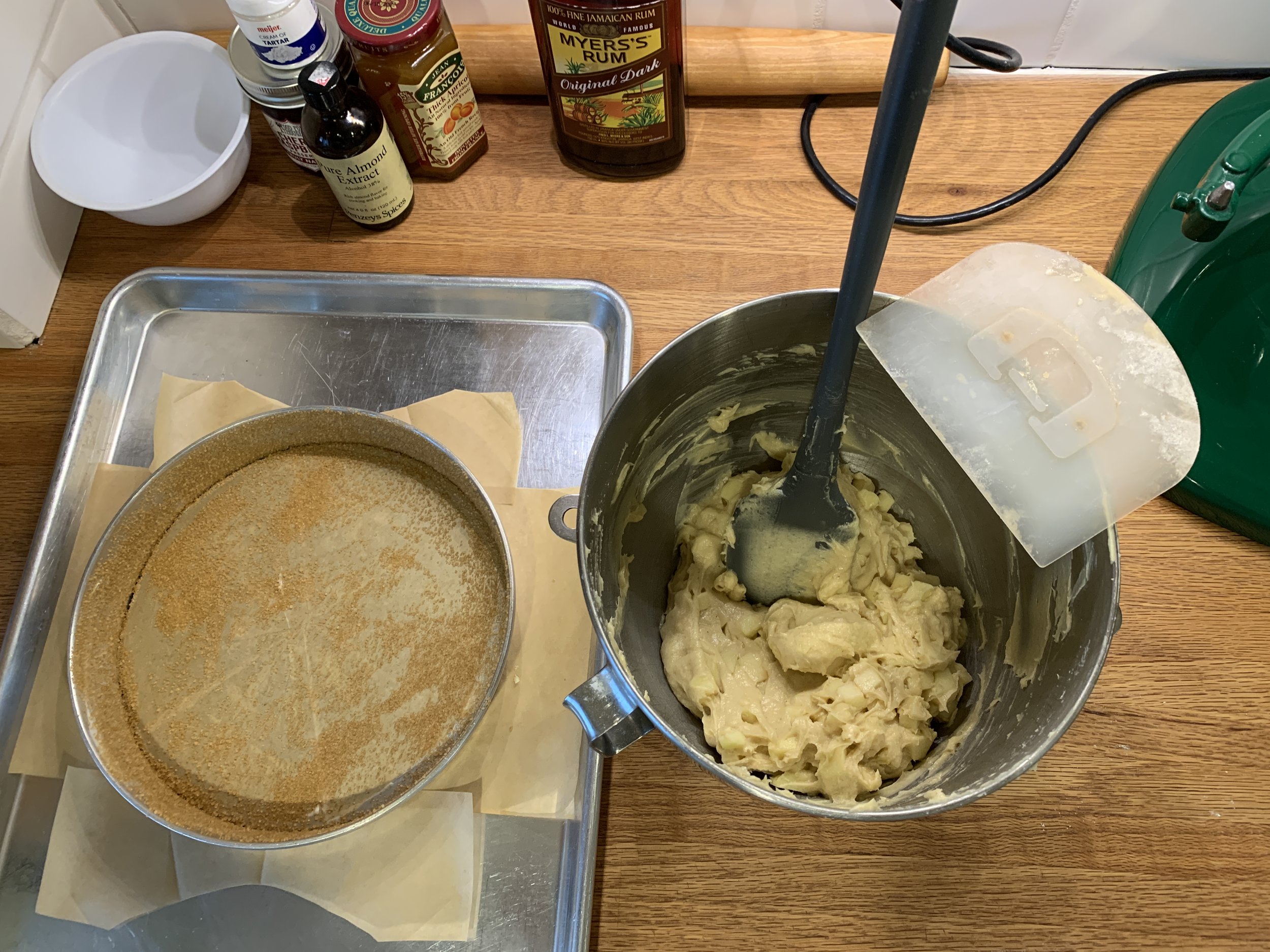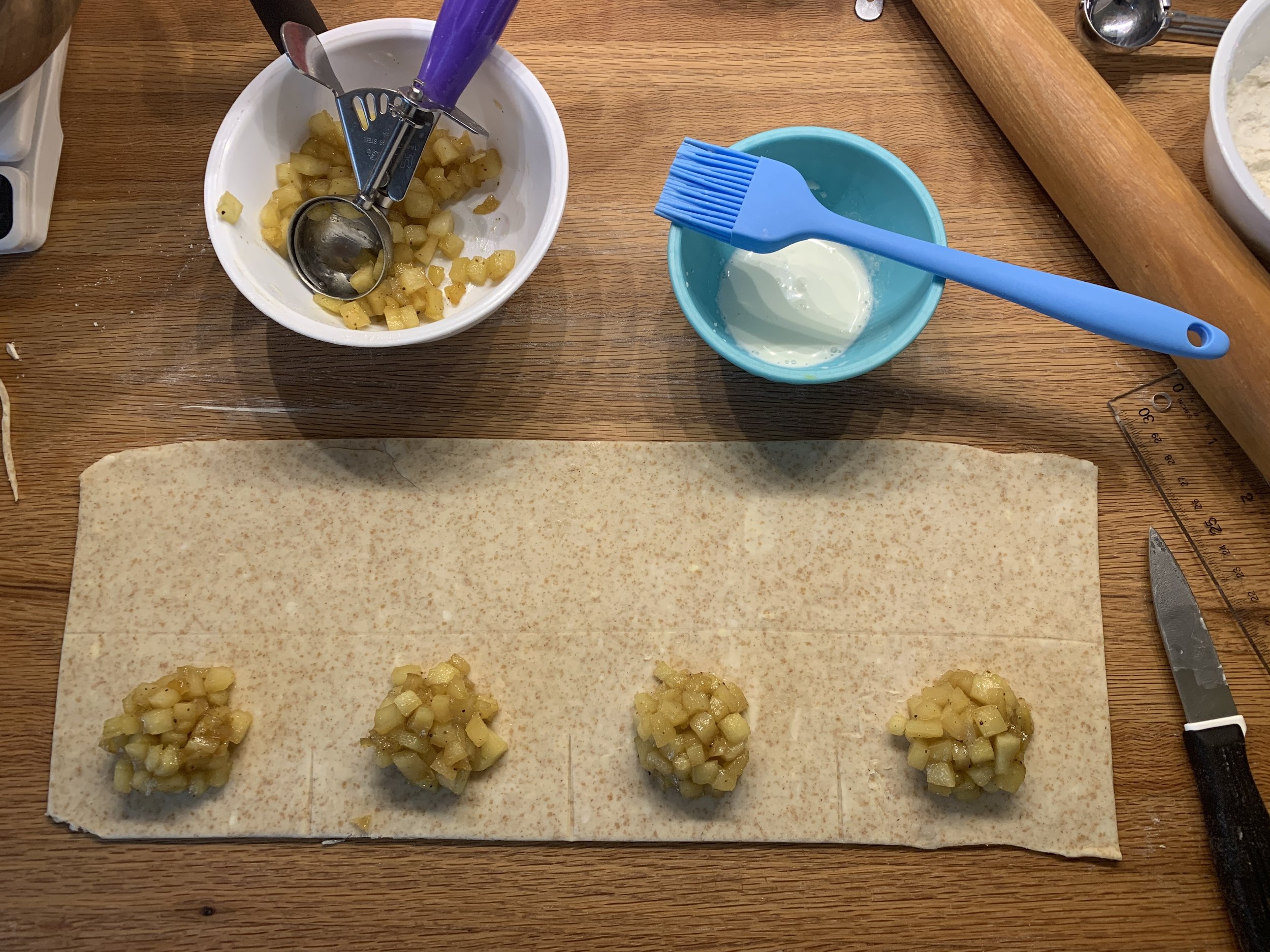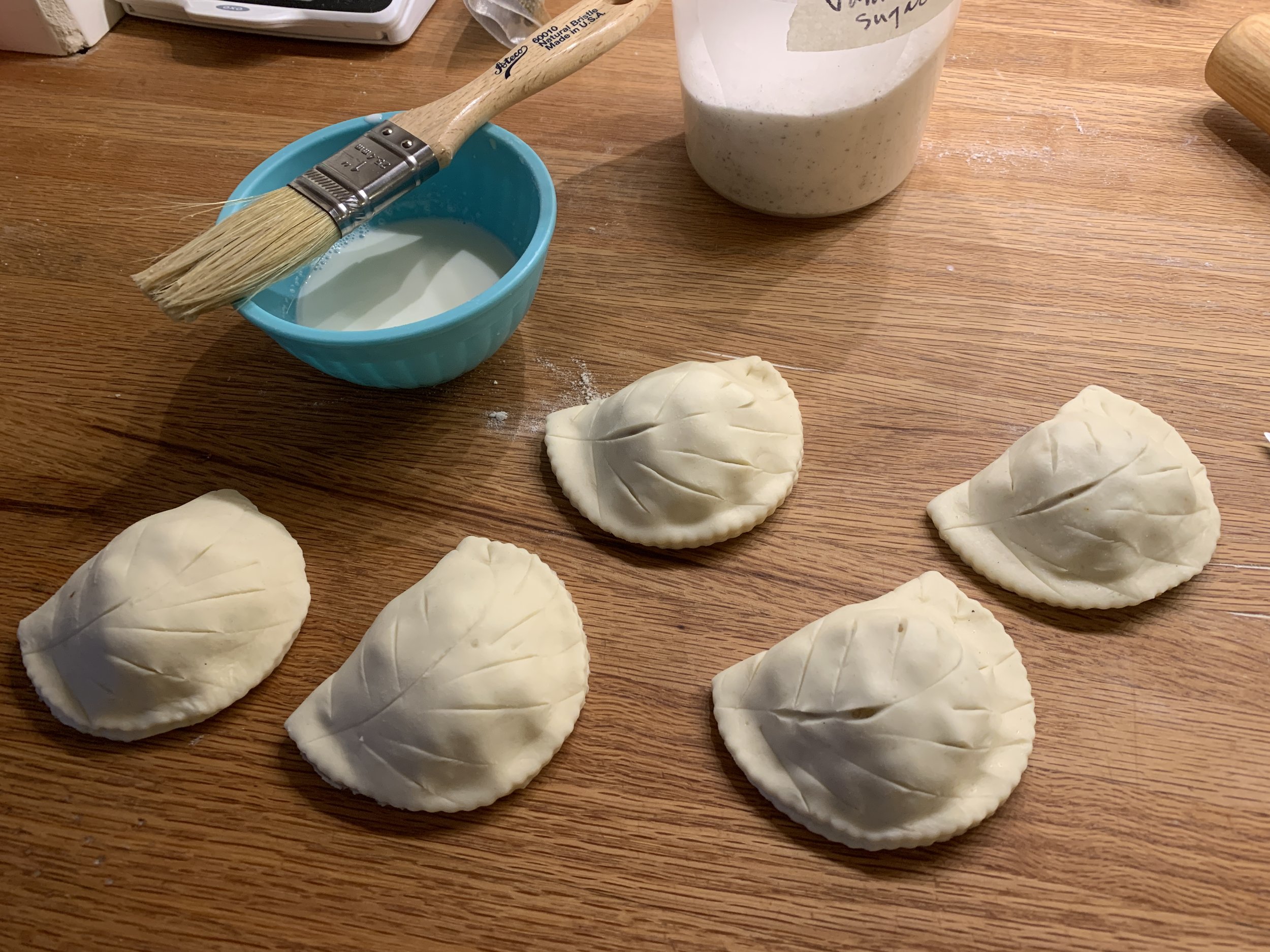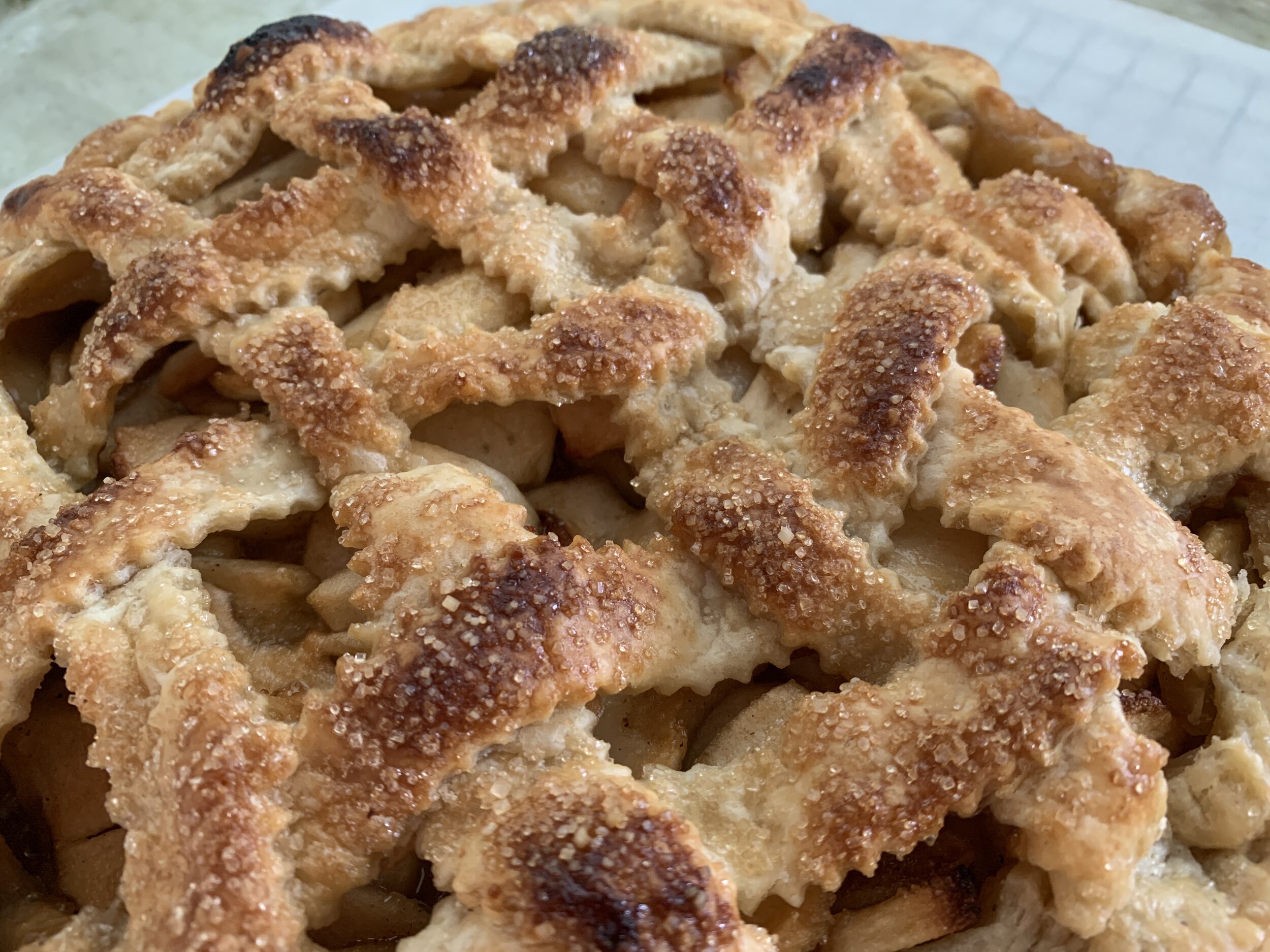French apple cake
/I mentioned this cake in passing ONE YEAR ago (!) in one of my update posts. I had baked the first test batch back in autumn of 2023 in preparation for a demo session I did at an assisted living facility - it was a big hit. I’ve made it several times since and added it to my to-do list for the blog. Well here goes! Plus, you’ll have time to make it for your own New Year’s celebration!
Inspired by a recipe in Aleksandra Crapanzano’s book “Gateau”, I did some quick research and found a number of recipes for this rum scented classic French cake. While AC’s ups the ante a bit with adding rum soaked raisins to the batter along with the apples, the bulk of recipes on line follow a simpler approach.
When I did my stages in 2007 at Pâtisserie Pascal Pinaud in Paris’s 5th arr., Golden Delicious apples were the go to for apple tartelettes and apple cakes. They have a lovely flavor and hold up well when baked without getting all mushy. I still like using them but also find Fuji, Granny Smith and Jonagolds great for baking. Of course, one can play around with a mixture of favorites too!
I’ve made the base recipe in a 9” cake pan, two 6” cake pans and silicone muffin type molds (using molds with 3 ounce/85 g wells yields about 14 cakes). Silicone molds don’t require buttering but the pans should be buttered and lined with parchment - I like to butter the parchment and inner sides of the pan and dust with raw sugar. It gives the outer edges a nice hint of crunch. Below is a nine inch pan ready to go.
I add a couple of my favorite spices (coriander and nutmeg) to the batter and dot the top with diced butter and raw sugar sprinkle early in the bake.
Here’s my recipe. Eggs and butter should be at room temperature. In the foreground of the photo below is organic golden cane sugar, a Costco find that I’ve been using as my “house” sugar for awhile now. On the right are my diced butter and raw sugar for the top.
mise en place
I probably sound like a broken record, but the process here is very much like many cake recipes out there. Here’s the recipe again.
Prep your pan. Heat the oven to 350ºF.
Peel, core and cut apples into 1/2” cubes.
In a separate medium bowl, whisk together 130 g / 1 cup all purpose flour, 1 teaspoon baking powder, 1/2 teaspoon ground coriander, a few grates of fresh nutmeg and 1/4 teaspoon kosher salt.
In the bowl of a stand mixer with paddle attachment cream 113 g / 4 ounces unsalted butter and 130 g / 2/3 cup cane sugar on medium high about three minutes until light and fluffy.
Blend in the eggs, one at a time, scraping the bowl down after each addition. Blend in 1 teaspoon vanilla extract and 45 ml / 3 tablespoons dark rum.
Add dry ingredients and mix until just combined. Fold in apples.
Ready to pan up!
Transfer batter into your prepared pan and level the top. Lots of apple chunks goin’ on!
Bake for 10 minutes then remove from the oven and top with diced butter and raw sugar.
Place back into the oven and bake another 30 minutes, checking half way through and rotating the pan 180º. Look for a golden top and a tester coming out clean.
Looks good (and smells good too!)
Let the cake cool in the pan 10-15 minutes before gently turning out onto a cooling grid. If you’re using a springform pan or a removable bottom cake pan like the one above, it’s very easy to release the cake. You can then let it fully cool resting on the pan bottom. Then, once cooled, carefully slide an offset spatula under the cake to separate it from the parchment and place on your desired platter for serving.
I made this for a Thanksgiving family gathering so for transport (and to give it a hint of decor) I set it on a doily topped cardboard cake round and stashed it in a covered cake carrier for the road trip. Simple.
To snazz it up a bit I went with my favorite whipped mascarpone topping, dolloped on and spread into swirls. Whip 56 g / 2 ounces mascarpone with 4 ounces / 1/2 cup heavy cream, a teaspoon of vanilla and 2 tablespoons (or to taste) of either confectioners sugar or caramel (my preference here - so good with apple desserts).
A sprinkle of oat crumble sets it off.
Hmmmm . . . good!
As mentioned earlier, I’ve also made these in silicone muffin style molds. I’m a big fan of the mascarpone/oat crumble garnish!
The recipe also works well in two 6” cake pans. If you’re serving just a few people, you can freeze one of them for later. Not a bad deal.
You still have time to make this for your New Year’s Eve or New Year’s Day gathering so get into that kitchen of yours and go for it!
Here’s to new adventures in baking and in life for 2025!























































